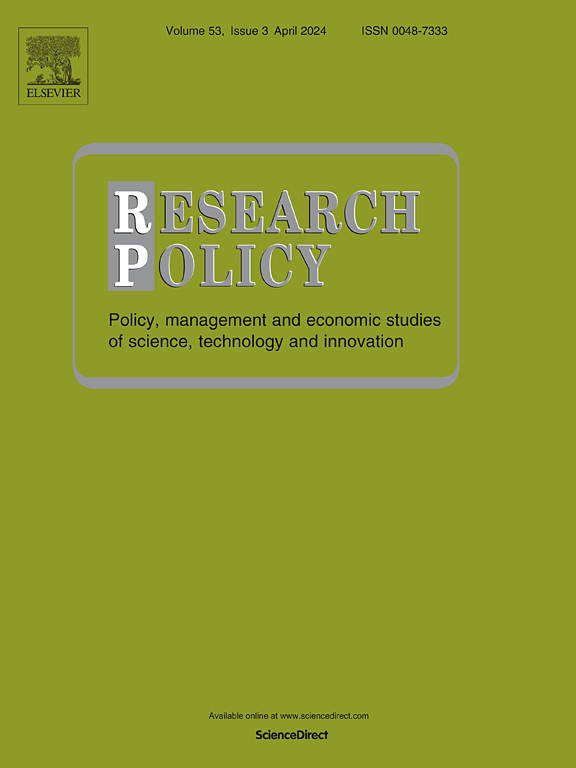女性邻居与科学事业
IF 8
1区 管理学
Q1 MANAGEMENT
引用次数: 0
摘要
你的邻居对你的考试成绩和事业有多大影响?在本文中,我们研究了同龄邻居的一个可观察特征——他们的性别——是如何影响高中和大学的各种成绩的。我们利用从一年到下一年出生的当地队列性别组成的随机性。在学校分配是基于与居住地址的接近程度的设置中,我们将所有就读于邻近学校的同辈同龄人定义为邻居。利用希腊连续队列中学生的新行政数据,我们发现,女性邻居的比例越高,男女学生的高中和大学成绩都越好。我们还发现,当女学生接触到更多女性邻居时,她们更有可能参加促进创新的STEM学科,并追求更有经济回报的职业道路。我们收集了关于公共空间(如教堂、图书馆、公园、童子军和运动场)的丰富定性地理数据,以了解进入社会互动空间是否会驱动邻居效应。我们发现公共设施放大了女性的邻居效应。本文章由计算机程序翻译,如有差异,请以英文原文为准。
Female neighbors and careers in science
How much does your neighbor impact your test scores and career? In this paper, we examine how an observable characteristic of same-age neighbors—their gender—affects a variety of high school and university outcomes. We exploit randomness in the gender composition of local cohorts at birth from one year to the next. In a setting in which school assignment is based on proximity to residential address, we define as neighbors all same-cohort peers who attend neighboring schools. Using new administrative data for the universe of students in consecutive cohorts in Greece, we find that a higher share of female neighbors improves both male and female students’ high school and university outcomes. We also find that female students are more likely to enroll in STEM disciplines that promote innovation and pursue more financially rewarding career paths when they are exposed to a higher share of female neighbors. We collect rich qualitative geographic data on communal spaces (e.g., churches, libraries, parks, Scouts and sports fields) to understand whether access to spaces of social interaction drives neighbor effects. We find that communal facilities amplify neighbor effects among females.
求助全文
通过发布文献求助,成功后即可免费获取论文全文。
去求助
来源期刊

Research Policy
MANAGEMENT-
CiteScore
12.80
自引率
6.90%
发文量
182
期刊介绍:
Research Policy (RP) articles explore the interaction between innovation, technology, or research, and economic, social, political, and organizational processes, both empirically and theoretically. All RP papers are expected to provide insights with implications for policy or management.
Research Policy (RP) is a multidisciplinary journal focused on analyzing, understanding, and effectively addressing the challenges posed by innovation, technology, R&D, and science. This includes activities related to knowledge creation, diffusion, acquisition, and exploitation in the form of new or improved products, processes, or services, across economic, policy, management, organizational, and environmental dimensions.
 求助内容:
求助内容: 应助结果提醒方式:
应助结果提醒方式:


